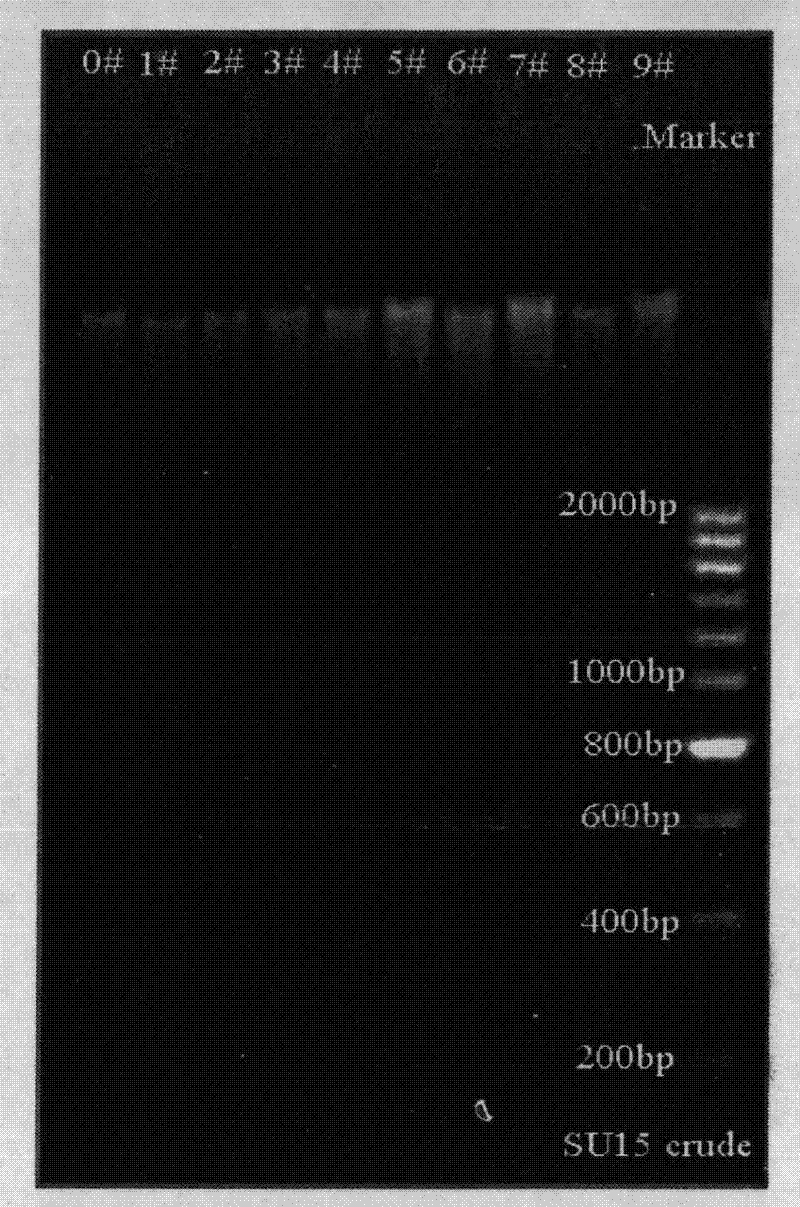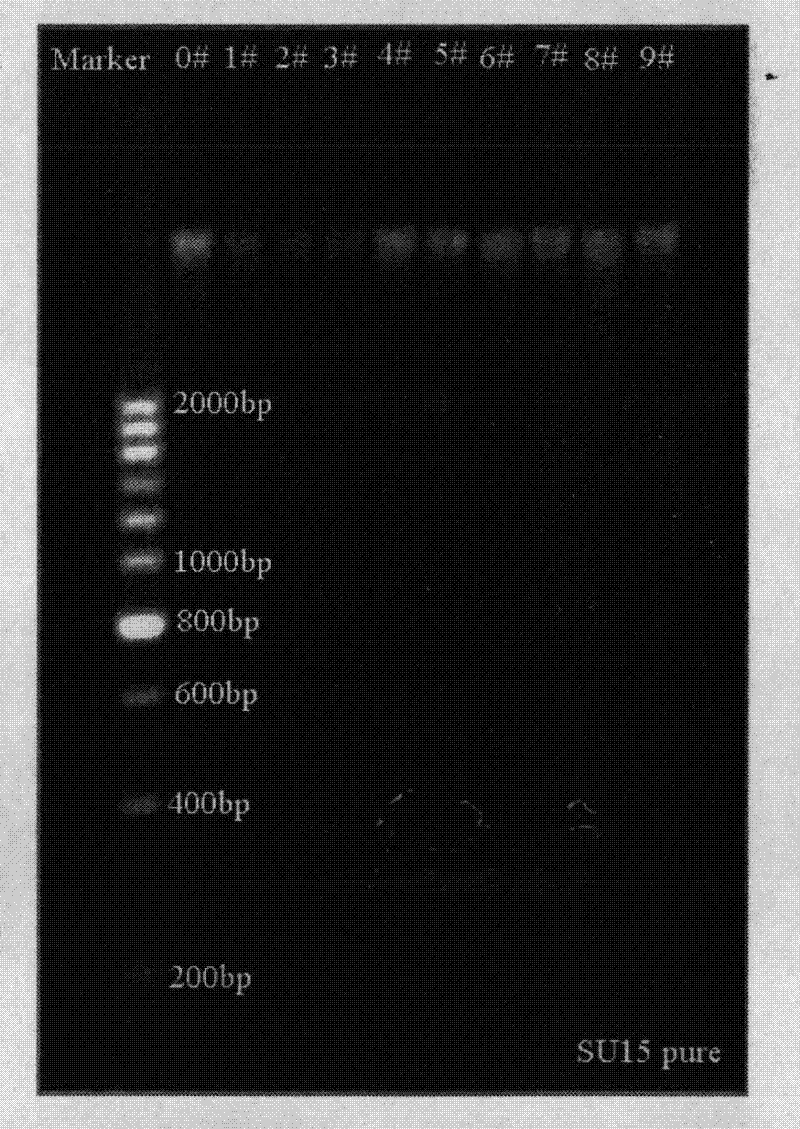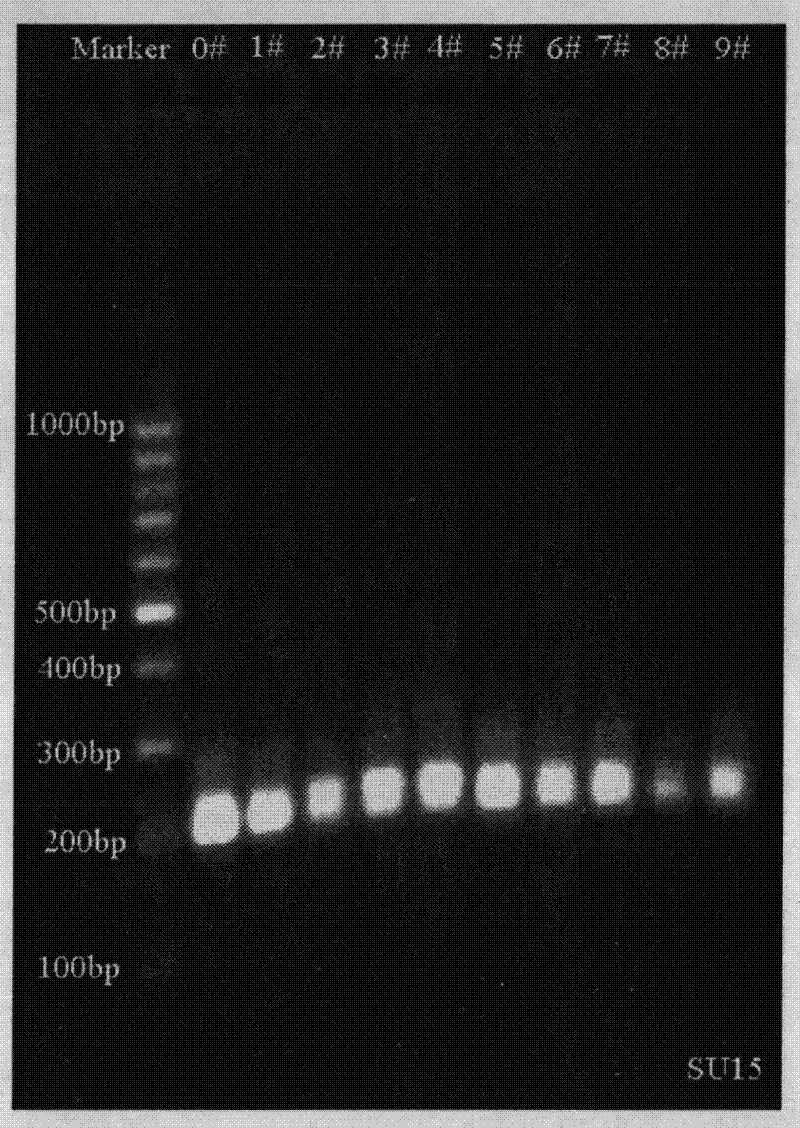PCR-DGGE (Polymerase Chain Reaction Denaturing Gradient Gel Electrophoresis) analysis method of microbial diversity in bioremediation process of soil polluted by petroleum
A technique of PCR-DGGE and soil biology, applied in the field of soil microbial community diversity analysis, to achieve high purity and sufficient yield
- Summary
- Abstract
- Description
- Claims
- Application Information
AI Technical Summary
Problems solved by technology
Method used
Image
Examples
Embodiment Construction
[0019] The present invention will be described in detail below in conjunction with the accompanying drawings and embodiments.
[0020] 1. Oil-contaminated soil samples and their pretreatment
[0021] PCR-DGGE analysis was performed on the soil in the early stage of remediation (15 days) to investigate the microbial community structure and dynamic changes in the soil, as well as the microbial diversity in the system.
[0022] The soil used for the small test of oil-contaminated soil bioremediation was taken from an oil well in Shengli Oilfield. After removing impurities, air-drying, breaking up, passing through a 200-mesh sieve, and mixing, the soil was taken and divided into 10 small flower pots. , and screen the domesticated strains after mutagenesis by adding heavy ions. The basic physical and chemical properties of the oil-contaminated soil samples are shown in Table 1. The oil content of the soil is as high as 194.5g / (kg dry soil), far exceeding the critical value of 500m...
PUM
 Login to View More
Login to View More Abstract
Description
Claims
Application Information
 Login to View More
Login to View More - R&D
- Intellectual Property
- Life Sciences
- Materials
- Tech Scout
- Unparalleled Data Quality
- Higher Quality Content
- 60% Fewer Hallucinations
Browse by: Latest US Patents, China's latest patents, Technical Efficacy Thesaurus, Application Domain, Technology Topic, Popular Technical Reports.
© 2025 PatSnap. All rights reserved.Legal|Privacy policy|Modern Slavery Act Transparency Statement|Sitemap|About US| Contact US: help@patsnap.com



